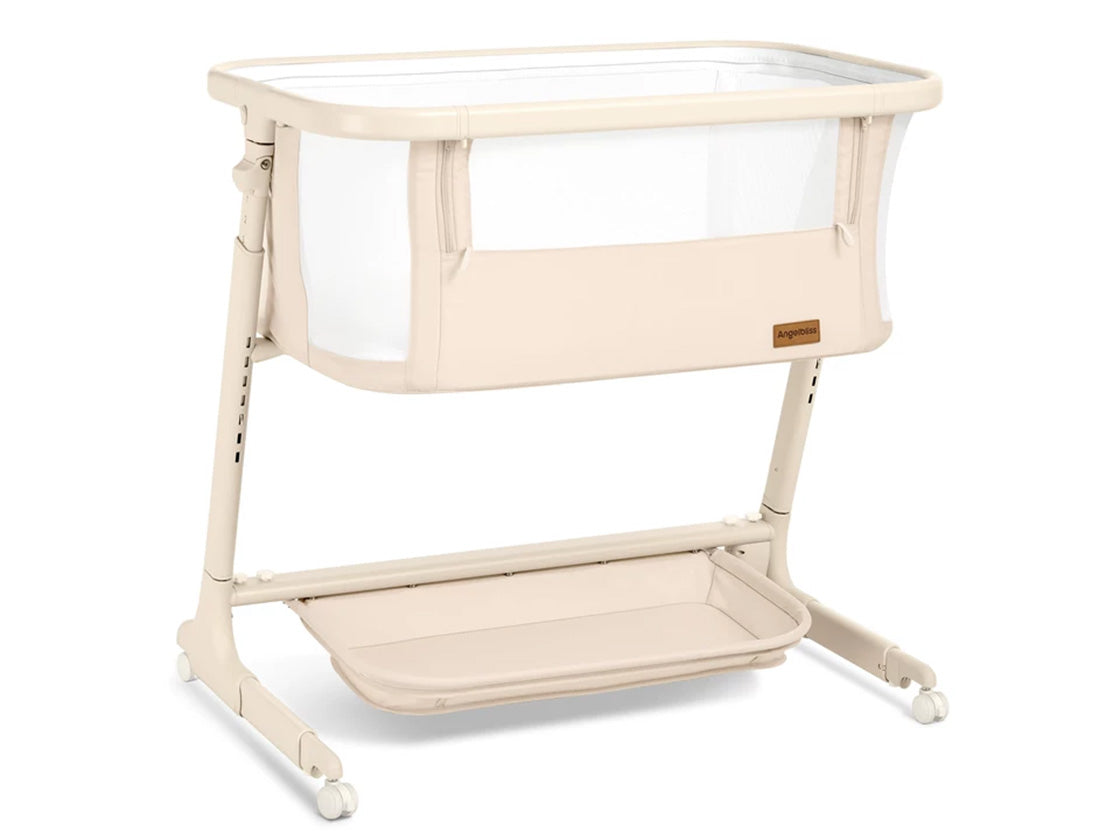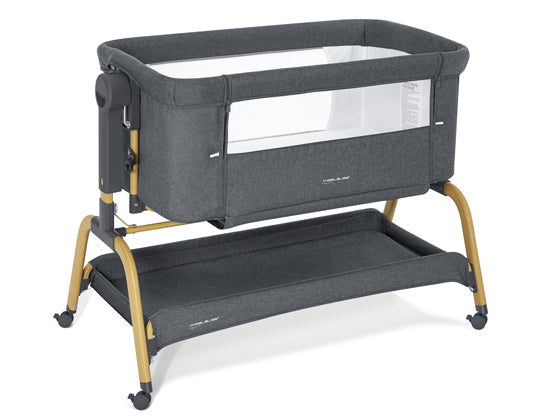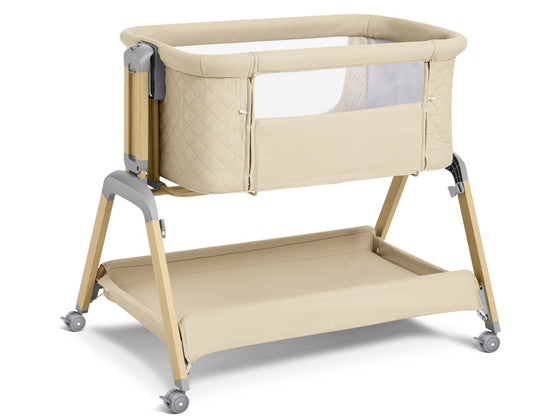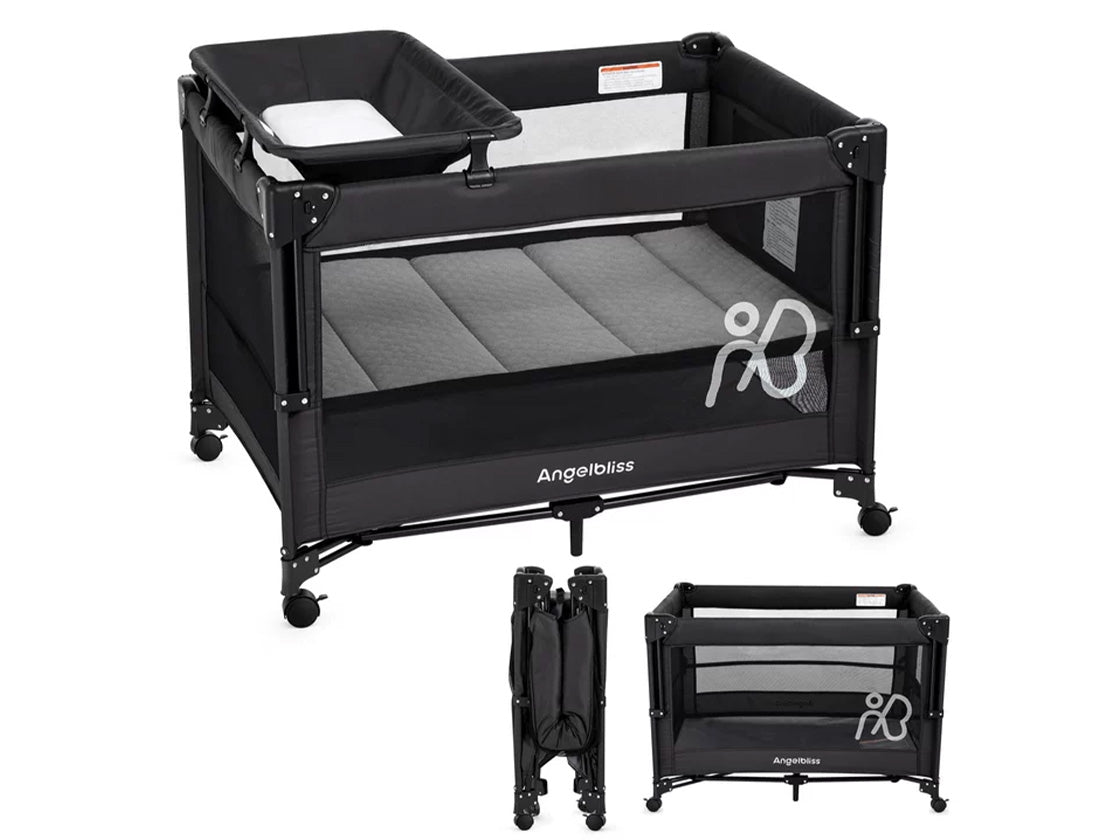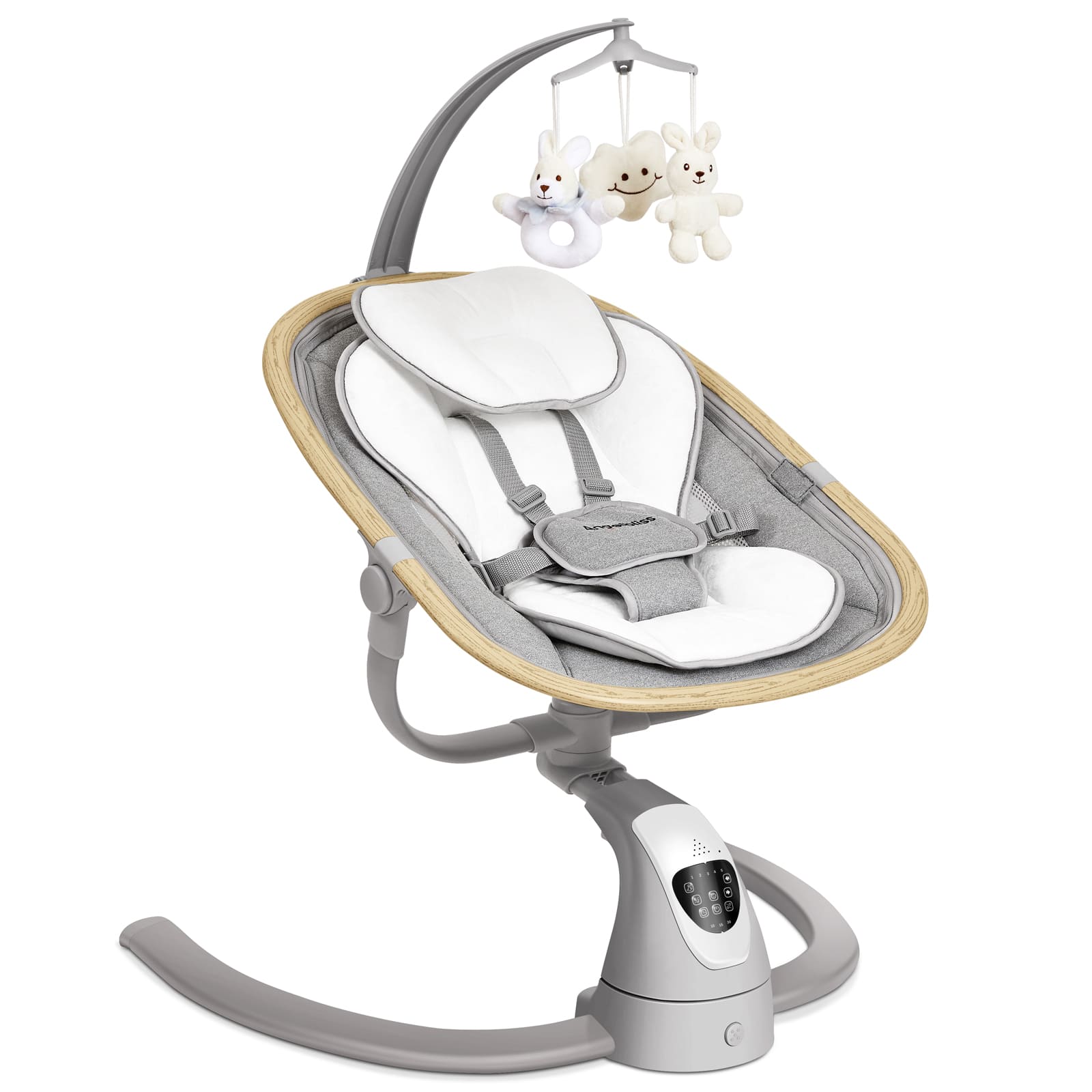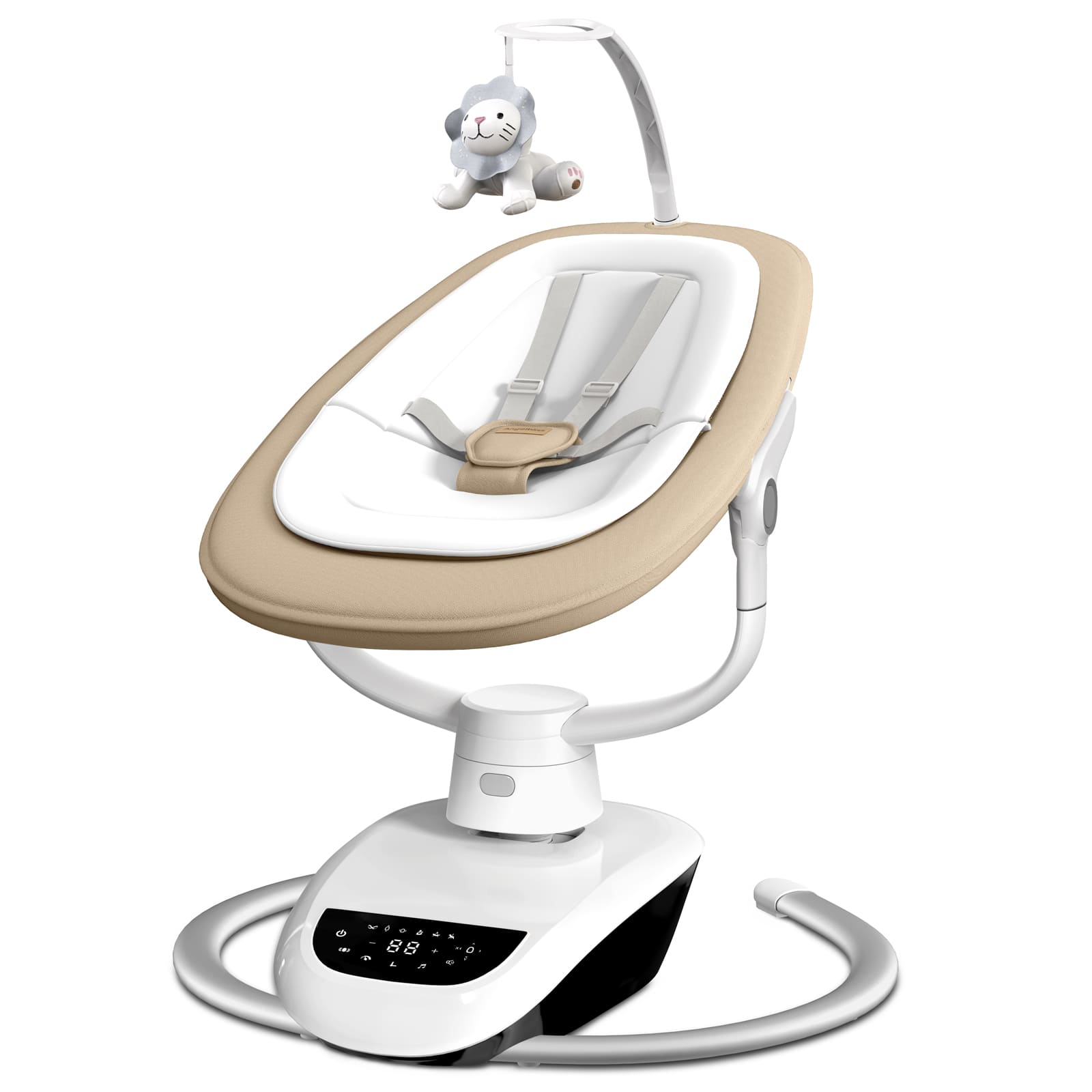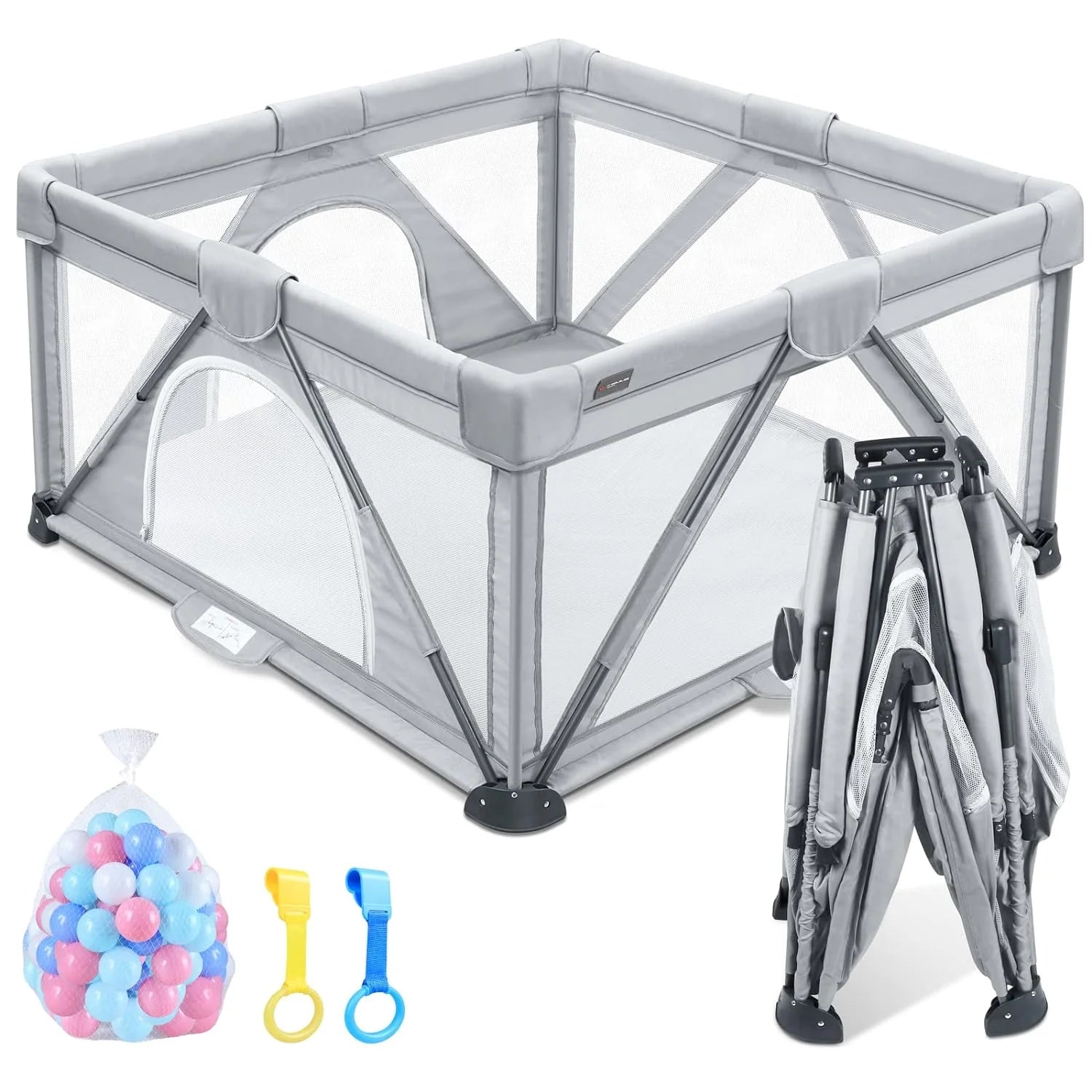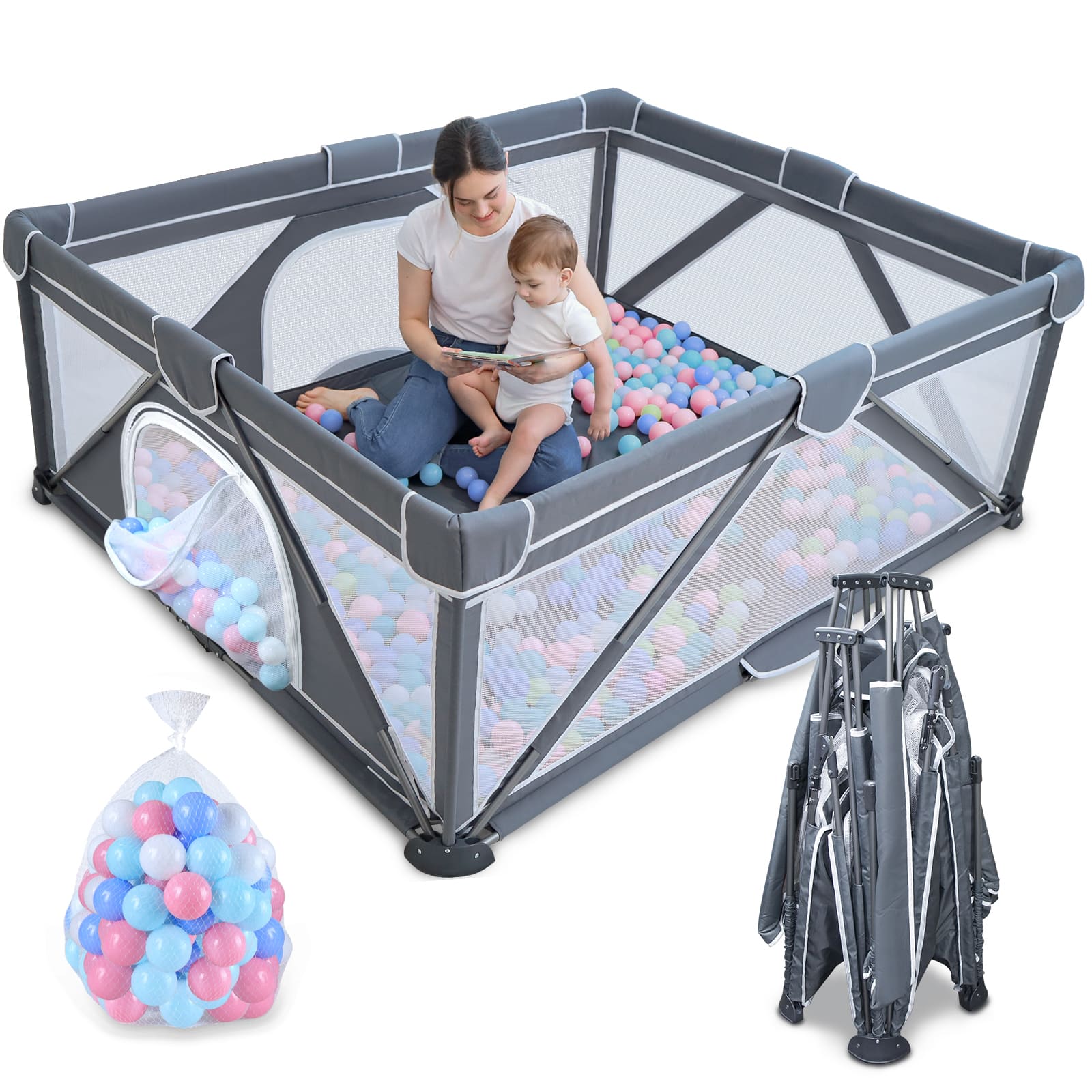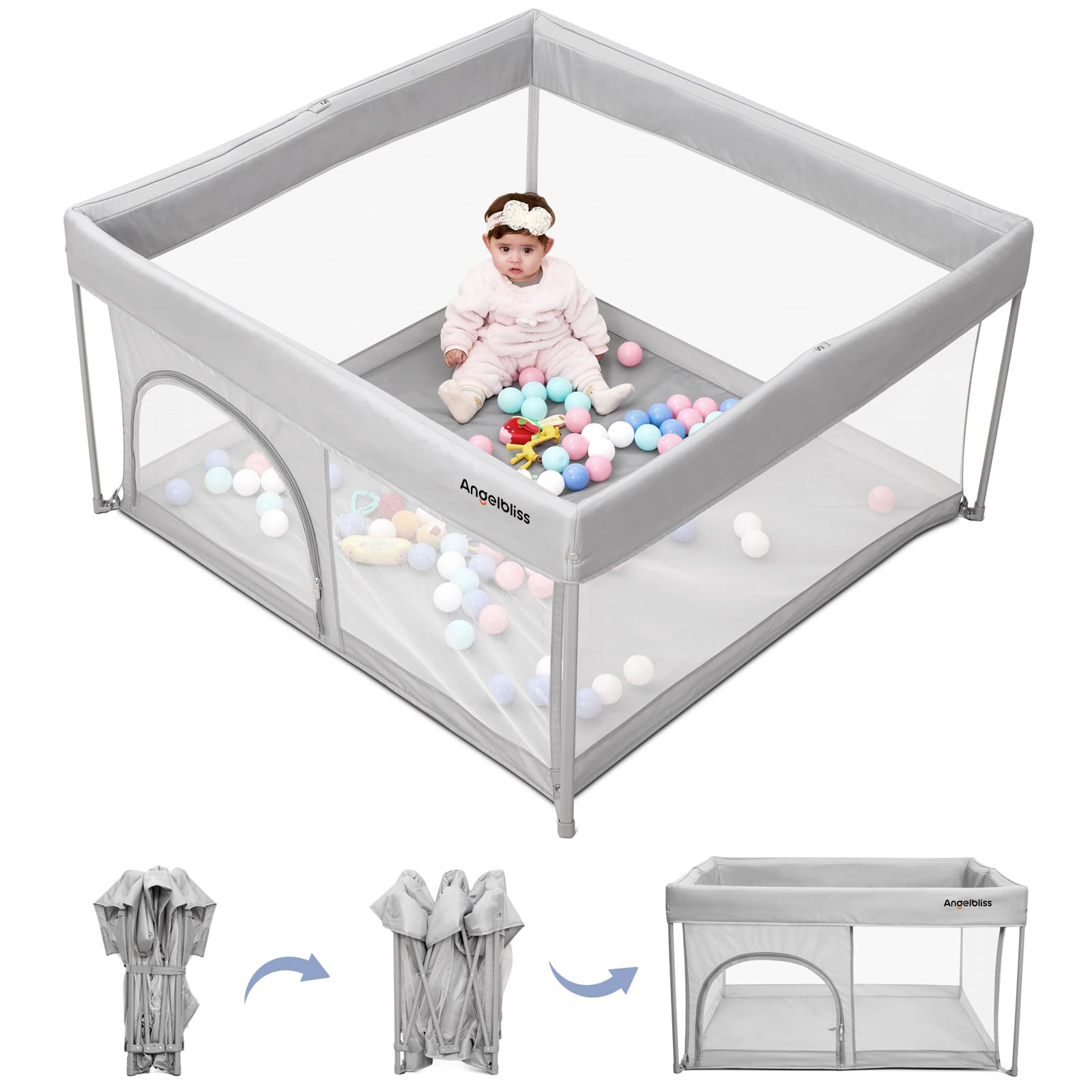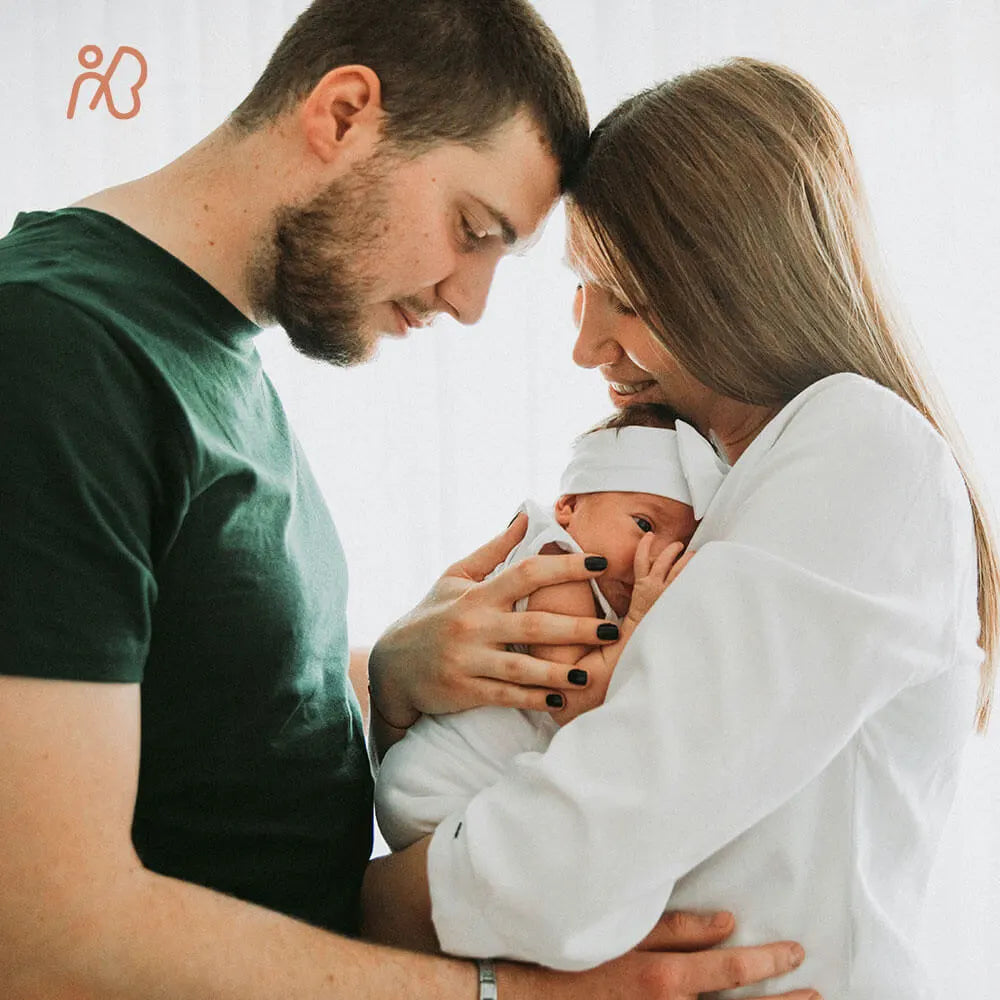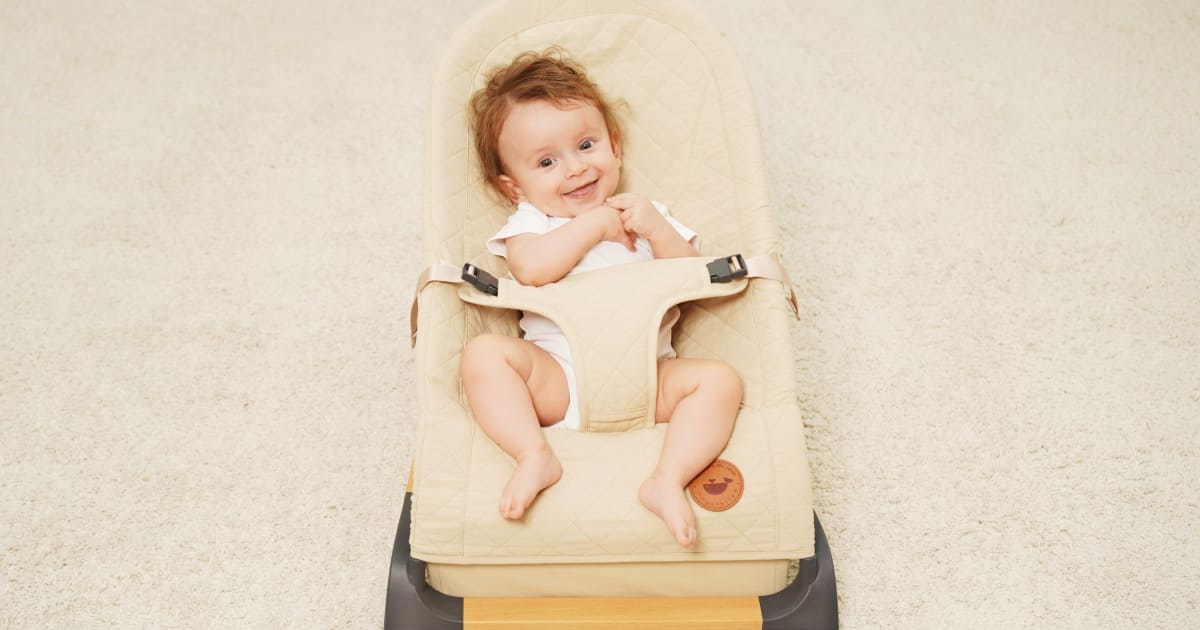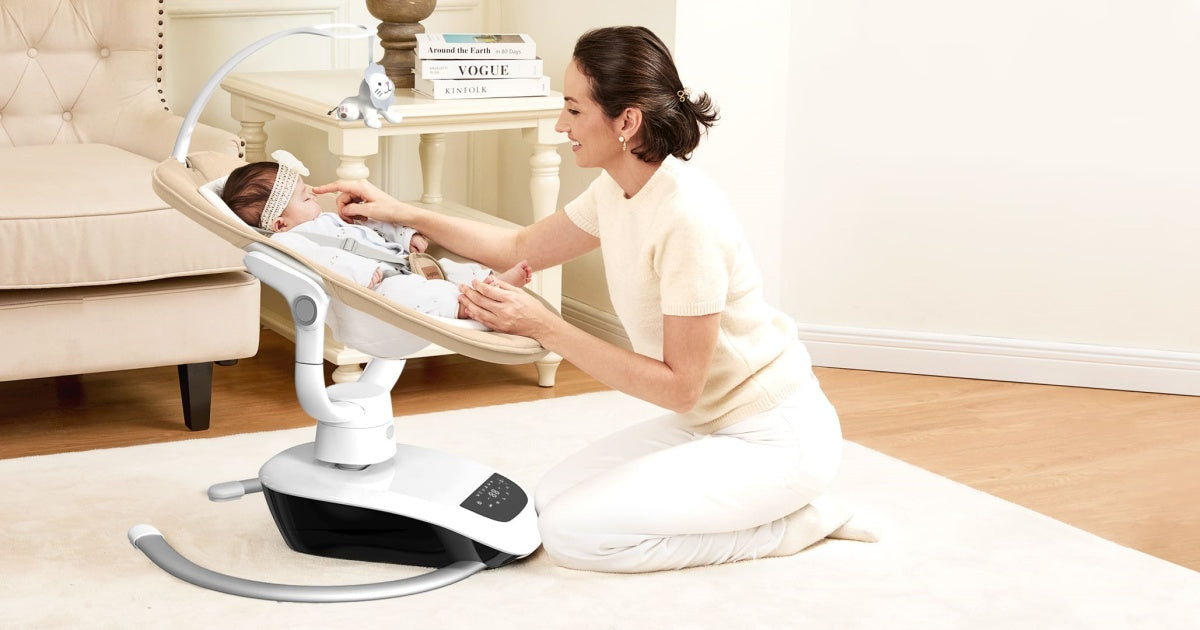That powerful, undeniable urge to keep your newborn close – to hear their tiny breaths, to respond to their stirs without fully leaving your bed – it's a primal, comforting desire. That intimacy is something that many parents long for, particularly at the vulnerable hour of the night. Yet, the very term "co-sleeping" can be confusing, often mixed with risky practices like bed-sharing.
The good news? There's a perfectly safe, AAP-recommended solution that beautifully bridges this gap: the co-sleeping bassinet. This innovative design allows you to nurture that precious bond and enjoy unparalleled convenience while ensuring your baby's absolute safety on their own separate, secure sleep surface.
1. What Exactly is a Sleeping Bassinet?
At its heart, a co-sleeping bassinet (often referred to as a bedside sleeper or attached bassinet) is a specialized type of bassinet designed specifically to sit directly next to your adult bed. Its defining feature is typically a drop-side or removable side panel that allows you to easily reach your baby without getting out of bed.
1.1 Definition & Purpose
A co-sleeping bassinet provides a dedicated, enclosed, and firm sleep space for your newborn that is adjacent to your bed, but not in your bed. It’s engineered to offer parents convenient access to their baby for nighttime feedings, comforting, and quick checks, all while adhering to the highest safety standards.
1.2 Crucial Distinction: Room-Sharing vs. Bed-Sharing
Understanding this difference is paramount for safe infant sleep:
Room-Sharing (Recommended): This is where your baby sleeps in their own safe sleep space (like a crib, bassinet, or co-sleeping bassinet) in the same room as you. Since room-sharing has been demonstrated to lower the incidence of SIDS by up to 50%, the American Academy of Pediatrics (AAP) highly advises it for at least the first six months, and ideally the first year. A co-sleeping bassinet is an ideal tool for facilitating safe room-sharing.
Bed-Sharing (NOT Recommended): This is when your baby sleeps directly in the same bed as you. The AAP and other safety organizations advise against bed-sharing due to significant risks, including suffocation, entrapment, and strangulation. These risks can arise from soft mattresses, adult bedding, pillows, and the potential for a parent to roll onto the baby.
A co-sleeping bassinet offers the benefits of closeness without the risks of bed-sharing, providing your baby with their own separate, firm sleep surface.
2. The Advantages of a Bassinet for Co-Sleeping
Choosing a co-sleeping bassinet can profoundly impact your early parenting journey, offering both emotional and practical advantages:
2.1 Enhanced Bonding & Parental Peace of Mind
Having your newborn within arm's reach fosters an incredible sense of connection and intimacy. This proximity can reduce parental anxiety, allowing you to easily check on your baby, offer a reassuring touch, and simply enjoy their tiny presence throughout the night, leading to greater peace of mind.
2.2 Unparalleled Convenience for Nighttime Feedings & Changes
This is where a co-sleeping bassinet truly shines. For breastfeeding moms, it means less disruption during nighttime feeds – no need to get out of bed, simply bring your baby close. For all parents, it simplifies diaper changes and comforting sessions, allowing for quicker responses and a smoother return to sleep for everyone involved.
2.3 Supporting Safe Sleep Guidelines (AAP Recommendations)
As mentioned, the AAP champions room-sharing as a key strategy to reduce the risk of SIDS. A co-sleeping bassinet perfectly aligns with this recommendation, ensuring your baby is close enough to be easily observed while remaining in their own designated, safe sleep environment. This setup makes it easier to respond to the baby's needs, which is a known factor in reducing SIDS risk.
3. Non-Negotiable Safety Principles for Co-Sleeping Bassinets
While designed for closeness, safety remains the absolute priority. When using a co-sleeping bassinet, these principles are non-negotiable:
3.1 Adhering to AAP Safe Sleep Principles
The fundamental AAP guidelines apply universally: Always place your baby on their back for every sleep. The bassinet's sleep surface must be bare – absolutely no blankets, pillows, bumper pads, or toys.
3.2 CPSC & JPMA Certifications
Always look for a CPSC (Consumer Product Safety Commission) compliant label, ensuring the bassinet meets mandatory U.S. safety standards. For an added layer of assurance, look for JPMA (Juvenile Products Manufacturers Association) certification, which signifies adherence to additional, voluntary safety and quality standards tested by independent labs.
3.3 Firm, Flat Mattress with No Gaps
The mattress must be firm and flat, fitting snugly into the bassinet with no gaps larger than half an inch (approximately two fingers) around the edges. A soft or ill-fitting mattress can create suffocation hazards.
3.4 Secure Attachment & No Gaps Between Bassinet and Bed
For models designed to attach to your bed, the securement system (straps, anchors, adjustable legs) must create a seamless, gap-free connection between the bassinet and your mattress. Any gap creates a potential entrapment or fall hazard for your baby. Ensure your baby can't get stuck between the two surfaces.
3.5 Breathable Sides (Mesh)
Prioritize bassinets with mesh sides. This design feature ensures optimal airflow, reducing the risk of overheating and rebreathing exhaled carbon dioxide. Mesh also allows for easy visibility of your baby.
4. Key Features to Look for When Choosing a Co-Sleeping Bassinet
When you're ready to select your co-sleeping bassinet, keep these practical features in mind to ensure maximum safety, convenience, and comfort:
4.1 Adjustable Height
Your co-sleeping bassinet should have multiple height adjustment settings to ensure its sleep surface can be precisely aligned with the height of your adult mattress. This closes dangerous gaps and produces a smooth transition.
4.2 Drop-Down/Removable Side
The core feature of a co-sleeper! Ensure the drop-down or removable side operates smoothly and, critically, locks securely into place when raised. This prevents accidental lowering or any movement that could compromise the baby's enclosure.
4.3 Stable Base & Secure Straps/Anchors
The bassinet must possess an exceptionally stable base that prevents wobbling or tipping. If it's a bedside attachment model, it should come with robust straps or anchoring systems that securely fasten it to your adult bed frame, eliminating any possibility of it drifting away.
4.4 Portability (Optional but Beneficial)
Some co-sleeping bassinets offer wheels or an easy-fold mechanism, making it simple to move the bassinet to another room for daytime naps or even for travel. While not essential for safety, this adds a layer of convenience.
4.5 Easy-to-Clean, Non-Toxic Materials
Babies are messy! Seek out bassinets with easily cleaned surfaces or covers made of machine-washable cloth that can be removed. To ensure a safe atmosphere for your child, make sure that all materials are non-toxic and devoid of dangerous chemicals like lead, phthalates, and BPA.
5. When to Transition from Your Co-Sleeping Bassinet
Like all baby gear, co-sleeping bassinets have limits designed for safety. Just as crucial as understanding how to employ a transition properly is knowing when to do so.
5.1 Weight & Age Limits
Most co-sleeping bassinets are designed for use until your baby reaches a maximum weight (typically 20-25 lbs) or a specific age (around 6 months), whichever comes first. For exact limits, always consult the handbook for your particular model.
5.2 Developmental Milestones
Crucially, your baby's developmental milestones are often the primary indicator that it's time to transition, even if they haven't hit the weight limit. The moment your baby shows any signs of rolling over, pushing up on hands and knees, or attempting to sit up unassisted, it's time to move them to a larger, more secure sleep space like a crib or Pack and Play. These new mobilities can create fall or entrapment hazards in a bassinet.
(For more details on these crucial signs, see our guide: Bassinet Weight Limit: How to Know When Your Baby Has Outgrown Their Sleep Space).
5.3 Next Steps
Once your baby has outgrown the co-sleeping bassinet, the next safe sleep space is typically a standard crib or a sturdy Pack and Play.
Angelbliss Bassinets: Designed for Close & Safe Sleep
At Angelbliss, we understand the profound desire for closeness balanced with uncompromising safety. That's why our bassinets are meticulously crafted to embody the very principles and features of a safe co-sleeping bassinet. We prioritize secure design, breathable materials, and robust construction so that you can enjoy those precious early months with complete confidence in your baby's proximity and well-being.
Explore the 3 In 1 Baby Rocking Bassinet BN03 - This popular choice offers versatile bedside sleeper functionality with a firm, breathable sleep surface and secure attachment, fostering safe closeness.
Discover the Angelbliss One-Push Setup Baby Bassinet & Pack and Play - A multi-functional solution that starts as a secure bedside bassinet and grows with your baby into a safe playard, ensuring longevity and adaptability.

